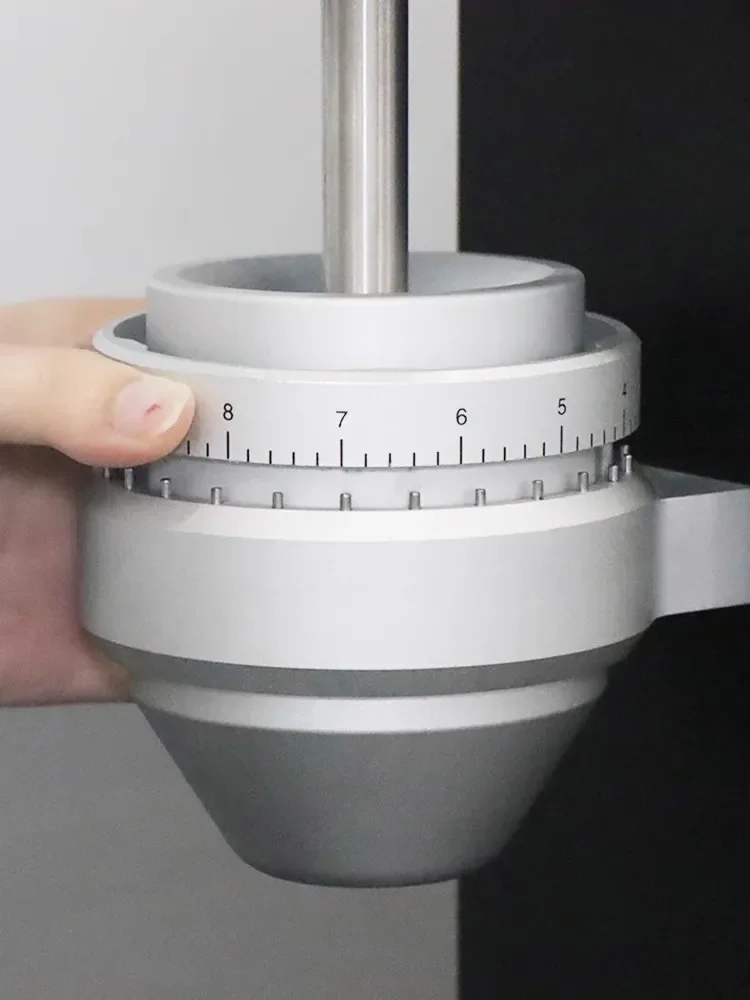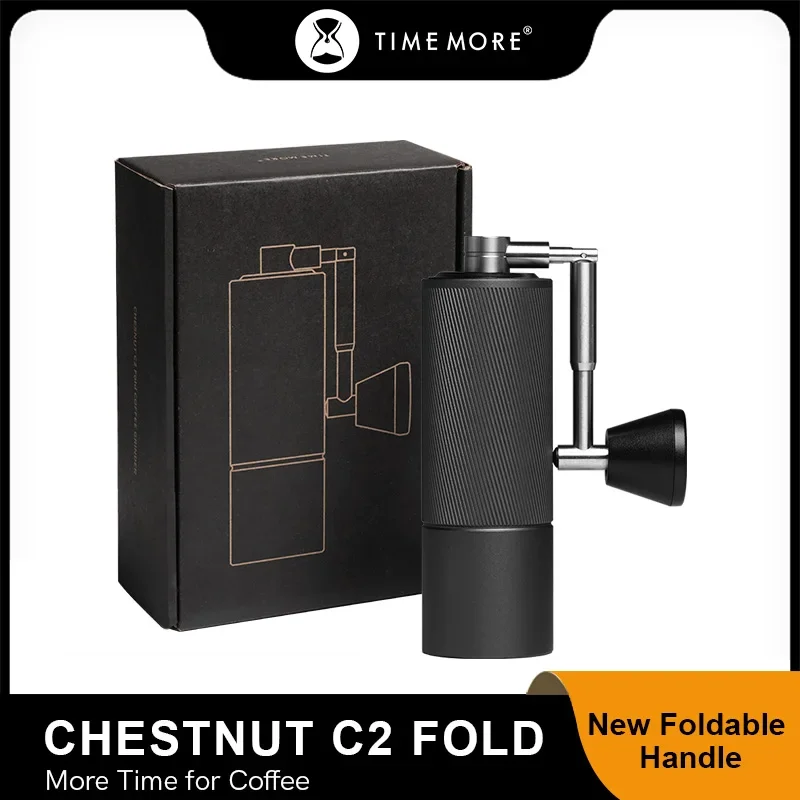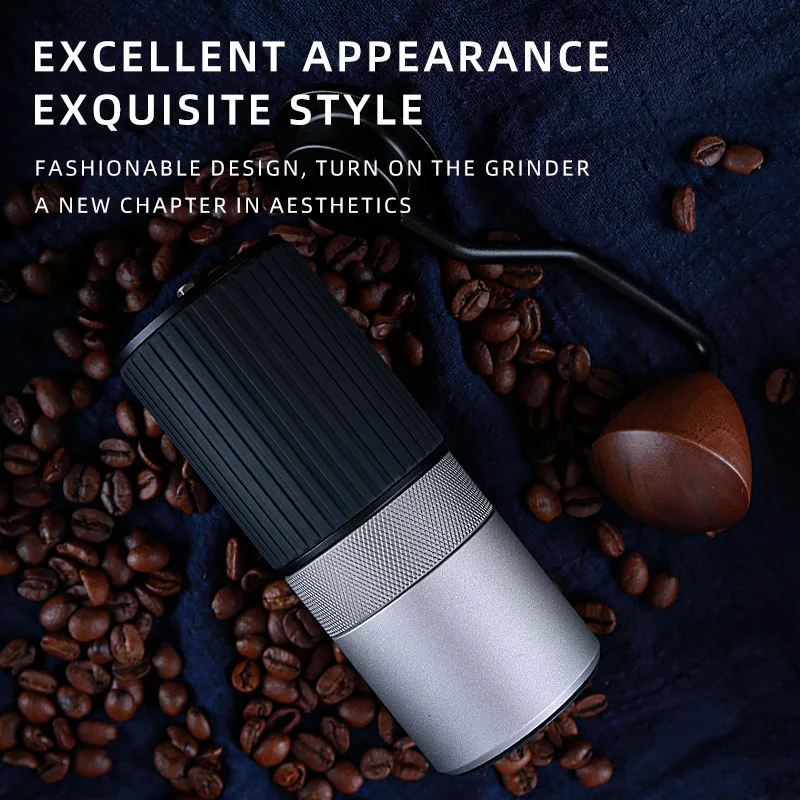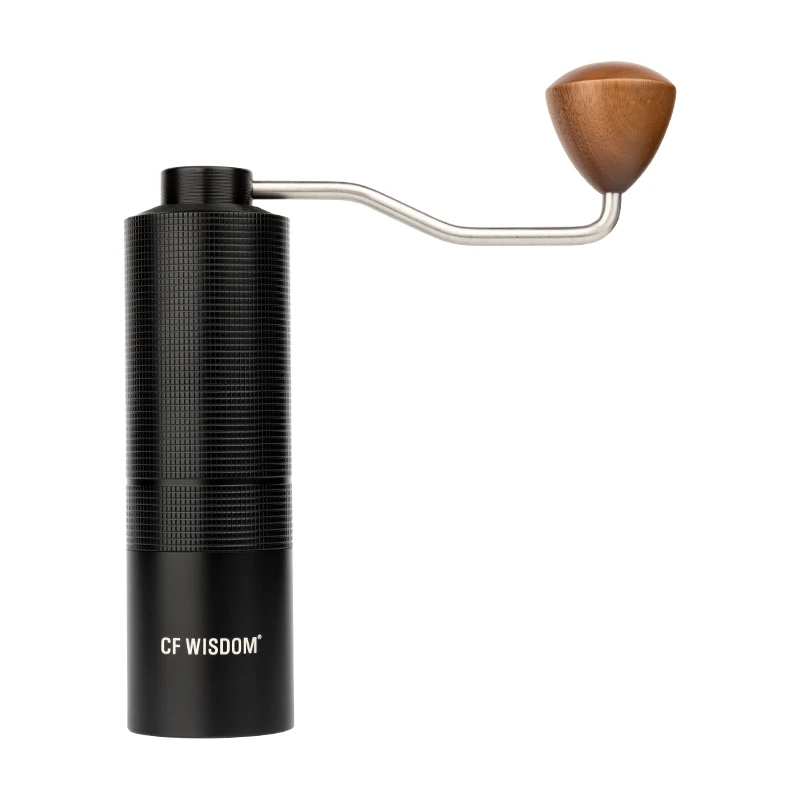The ritual of manually grinding coffee beans can be deeply satisfying – the aroma, the connection to the process, and the promise of a fresh, flavorful cup. However, not all hand grinders are created equal when it comes to day-to-day ease of use. Many coffee enthusiasts have experienced the frustration of difficult-to-clean grinders, components that wear down quickly, or mechanisms that require frequent adjustment.
Finding a truly low-maintenance hand grinder transforms your daily coffee preparation from potentially tedious to consistently enjoyable. This guide will help you identify the features that matter most:
- Cleaning ease and accessibility of components
- Durability of materials and construction quality
- Simplicity of grind adjustments and operation
- Design elements that minimize daily upkeep
At Savor Suite, we understand that quality manual grinders should enhance your coffee experience, not complicate it. Our focus on maintaining manual coffee grinders has shown that certain features consistently make the difference between frustration and satisfaction.
Let’s explore what truly makes a hand coffee grinder “low-maintenance” and how to spot these essential qualities when making your selection.
Defining “Low-Maintenance” in Hand Coffee Grinders
Before diving into specific features, it’s important to establish what we mean by “low-maintenance” in the context of manual coffee grinders. This concept encompasses several key components:
- Cleaning Ease: The grinder should be simple to disassemble, clean, and reassemble without special tools or complicated procedures
- Durability: High-quality materials and construction that resist wear and breakage over time
- Operational Simplicity: Intuitive use with minimal learning curve and few adjustments needed
- Performance Consistency: Reliable grinding results without frequent recalibration or tweaking
These elements matter because they directly impact your daily coffee experience. A truly low-maintenance grinder means more time enjoying your coffee and less time fussing with equipment. It also translates to better hygiene (as you’re more likely to clean a grinder that’s easy to clean), and a longer product lifespan.
In contrast, high-maintenance grinders often require special cleaning brushes, frequent recalibration, or have parts that easily break or wear out. Understanding the difference is essential for coffee enthusiasts seeking a do coffee grinders need maintenance perspective that balances quality with convenience.
Essential Low-Maintenance Design Features for Easy Cleaning
Cleaning ease is perhaps the most immediate and frequent maintenance concern for any coffee grinder. Coffee oils and fine particles inevitably build up, potentially affecting both flavor and performance if not addressed regularly.
The most cleaning-friendly hand grinders incorporate these design elements:
- Tool-free disassembly: The ability to take apart your grinder using just your hands makes regular cleaning much more likely
- Simple component access: Easy-to-reach burr chambers and grounds catches without hidden crevices
- Material quality: Smooth, non-porous materials like stainless steel that resist staining and coffee oil absorption
- Minimal nooks and crannies: Fewer places where grounds can become trapped and difficult to remove
- Anti-static properties: Materials or designs that minimize static cling, which causes grounds to stick everywhere
In well-designed grinders, the cleaning process should be straightforward: unscrew or unlock a few components, rinse or wipe them down, allow to dry completely, and reassemble. This simplicity makes a tremendous difference in long-term satisfaction.
Material choice plays a crucial role here, with stainless steel manual coffee grinders typically offering advantages over untreated plastic components, which can absorb oils and develop odors over time. Proper manual burr coffee grinder cleaning becomes significantly easier with thoughtful design elements that prioritize accessibility and simplicity.
Durability Factors That Minimize Long-Term Maintenance
Durability directly impacts maintenance requirements – the more robust your grinder’s construction, the less you’ll need to worry about repairs, replacements, or performance degradation over time.
Key durability features to look for include:
- Solid body construction: Full metal bodies (aluminum, stainless steel) provide stability during grinding and resist damage
- Quality burr materials: Hardened steel burrs generally outlast ceramic ones, especially if you occasionally encounter a small stone among your beans
- Precision manufacturing: Well-machined burrs with tight tolerances maintain consistent performance longer
- Stable axle and bearing system: Dual bearing systems prevent burr wobble that can lead to uneven grinding and faster wear
- Secure handle attachment: Solid connection points prevent wiggling or slipping during use
- Resilient overall design: Fewer plastic components in high-stress areas
These features prevent common issues like burr wobble, handle breakage, and body damage that would otherwise require repair or replacement. For example, high-quality burrs manufactured with precision maintain their cutting ability significantly longer than lower-quality alternatives, while dual bearings provide stability that prevents excessive wear on components.
Understanding long manual coffee grinders last expectations can help you appreciate the value of investing in durable construction. A well-built grinder might cost more initially but will require far less attention and fewer replacement parts throughout its lifespan.

Grind Adjustment Systems That Remain Stable and Hassle-Free
The adjustment mechanism in a hand grinder can be a significant source of maintenance headaches if poorly designed. An ideal low-maintenance adjustment system should include:
- Clear, intuitive settings: Easily understood indicators that don’t require guesswork
- Stable adjustment retention: Settings that stay firmly in place during grinding without drifting
- Consistent performance: Reliable grind size results every time you use a particular setting
- Minimal wear points: Fewer parts that can deteriorate or become misaligned
- Simple recalibration: When needed, the ability to reset or recalibrate without specialized knowledge
From a maintenance perspective, stepped adjustment systems (with distinct “clicks” between settings) often provide more stability during use compared to stepless systems, though the latter offers more precise control. The key is finding a mechanism that balances your need for precision with stability and ease of use.
Common adjustment issues include settings that drift during grinding (resulting in inconsistent particle size) or mechanisms that become loose or sticky over time. Quality fine adjustment hand grinder options address these concerns through thoughtful engineering that prioritizes both precision and reliability.
Ergonomic Design Elements That Reduce Wear and User Fatigue
Ergonomics might seem unrelated to maintenance, but poor design leads to greater strain on both the user and the grinder’s components. Well-designed ergonomic features contribute significantly to reduced maintenance needs:
- Efficient handle design: Proper handle length and shape provide mechanical advantage, reducing force required
- Comfortable grip materials: Non-slip surfaces that remain comfortable during extended use
- Stable body design: Shapes that sit securely during grinding, preventing tipping or sliding
- Balanced weight distribution: Even weight that doesn’t cause the grinder to feel top-heavy or unstable
When a grinder requires less force to operate, components experience less stress during each use. For example, a well-designed handle with appropriate leverage reduces strain on the burrs, axle, and bearings, extending their usable life. Similarly, stability during grinding prevents excess stress on internal components that can lead to premature wear.
Understanding ergonomic features coffee grinders incorporate can help you select options that will be both more comfortable to use and less likely to develop mechanical issues over time.
Additional Design Features That Minimize Daily Upkeep
Beyond the major components, several supplementary design features can significantly reduce day-to-day maintenance hassles:
- Lidded bean hoppers: Prevent beans from popping out during grinding and creating mess
- Secure grounds containers: Catch bins that attach firmly and don’t leak fine particles
- Anti-static treatments: Materials or coatings that minimize static electricity and reduce grounds clinging to surfaces
- Efficient bean feeding: Designs that guide beans into the burrs without manual assistance or shaking
- Minimal loose parts: Fewer small, easily lost components that require regular handling
These seemingly minor features can make a substantial difference in daily satisfaction. For instance, a well-designed grounds catch prevents countertop mess that would otherwise need cleaning after each use, while anti-static materials reduce the frustration of grounds clinging to every surface.
Many quality hand burr grinder options incorporate these thoughtful design elements that may not be immediately obvious but significantly improve the user experience over time.
Fine Adjustment Hand Grinder, Precision Manual Grinder, Travel Coffee Grinder
Price range: $185.11 through $494.63 Select options This product has multiple variants. The options may be chosen on the product pageHand Burr Grinder, Hand Crank Coffee Grinder, Manual Espresso Grinder, Portable Coffee Grinder
Price range: $262.72 through $300.22 Select options This product has multiple variants. The options may be chosen on the product pageManual Burr Mill, Manual Coffee Grinder Stainless Steel, Manual Coffee Mill Grinder, Mechanical Coffee Grinder
Price range: $127.26 through $130.32 Select options This product has multiple variants. The options may be chosen on the product pageHand Burr Grinder, Manual Coffee Grinder Stainless Steel, Precision Manual Grinder
Price range: $183.64 through $187.52 Select options This product has multiple variants. The options may be chosen on the product page

Red Flags: Design Elements That Signal High-Maintenance Requirements
Just as important as knowing what features to seek is recognizing warning signs that a grinder will require excessive maintenance:
- Complex disassembly procedures: Grinders requiring multiple tools or complicated steps for basic cleaning
- Predominantly plastic construction: Especially in high-stress areas like burr mounts or adjustment mechanisms
- Static-prone materials: Surfaces that cause grounds to cling persistently
- Vague or unstable adjustment systems: Mechanisms without clear settings or that drift during use
- Numerous small components: Many separate pieces that must be removed and tracked during cleaning
- Limited burr chamber access: Designs that make reaching the grinding surfaces difficult
Each of these elements creates specific maintenance burdens. For example, grinders requiring special tools for disassembly often get cleaned less frequently, while plastic components in critical areas tend to wear more quickly, requiring replacement or causing performance issues.
Checking low-maintenance manual coffee grinders comparisons can help identify models that avoid these problematic design elements and save you significant frustration over time.
How to Research Maintenance Features Before Purchase
Armed with knowledge about which features matter, you can effectively evaluate maintenance aspects before buying:
- Study product specifications: Look for material information, particularly for burrs, bearings, and body construction
- Watch demonstration videos: Seek out disassembly and cleaning demonstrations to assess complexity
- Read targeted reviews: Look specifically for comments about cleaning ease and durability
- Check manufacturer documentation: Evaluate the clarity of maintenance instructions and recommended frequency
- Review warranty terms: Better warranties often indicate manufacturer confidence in durability
- Assess replacement part availability: Determine if components like burrs or handles can be purchased separately
When reading reviews, watch for phrases like “difficult to clean,” “grounds get stuck,” or “adjustment keeps slipping,” which signal maintenance issues. Conversely, positive indicators include “easy to disassemble,” “stays calibrated,” and “simple to maintain.”
Browsing our collection of manual coffee burr grinders with these considerations in mind will help you make a more informed decision based on maintenance needs as well as performance characteristics.
The Long-Term Value of Investing in Truly Low-Maintenance Grinders
When calculating the true cost of a coffee grinder, the initial purchase price is just one factor. A truly low-maintenance grinder delivers significant value through:
- Extended lifespan: Quality grinders often last decades rather than years
- Consistent performance: Maintained grind quality without degradation over time
- Greater daily satisfaction: The pleasure of using a tool that works reliably without fuss
- Better coffee quality: Proper maintenance is easier, resulting in cleaner flavors
While premium grinders typically cost more upfront, this investment often proves economical when considered over the product’s lifetime. A well-designed $150 grinder that lasts 10+ years is ultimately less expensive than replacing a $50 grinder every couple of years due to wear, breakage, or frustration.
More importantly, maximizing lifespan manual coffee grinder potential ensures you consistently enjoy the quality coffee experience you deserve. The right maintenance-friendly design makes this much more achievable without becoming a burden.

Common Questions About Hand Grinder Maintenance
How often should I clean my hand grinder?
For daily users, a quick cleaning (brushing out loose grounds) after each use and a more thorough cleaning weekly is ideal. For occasional users, thorough cleaning after every 1-2 weeks of use helps prevent oil buildup.
Can I wash hand grinder parts with water?
Most metal parts can be rinsed with water, but must be thoroughly dried immediately to prevent rust. Always check manufacturer recommendations, as some components (particularly certain burrs or those with special coatings) may require dry cleaning only.
Do ceramic burrs require different maintenance than steel?
Yes. Ceramic burrs are more brittle and can chip if dropped or if they encounter small stones. However, they typically don’t need the same careful drying as steel burrs to prevent oxidation. Both benefit from periodic cleaning with a brush rather than immersion.
How can I tell if my burrs need replacement?
Signs include noticeably inconsistent grind size, difficulty achieving fine grinds, significantly increased grinding time, or visible damage to burr edges. Quality burrs should last many years before showing these symptoms, particularly with proper lubricating hand coffee grinder burrs techniques when appropriate.
By focusing on truly low-maintenance features, you’ll invest in a hand grinder that remains a joy to use for years to come – creating a coffee ritual that’s about enjoyment rather than upkeep.







